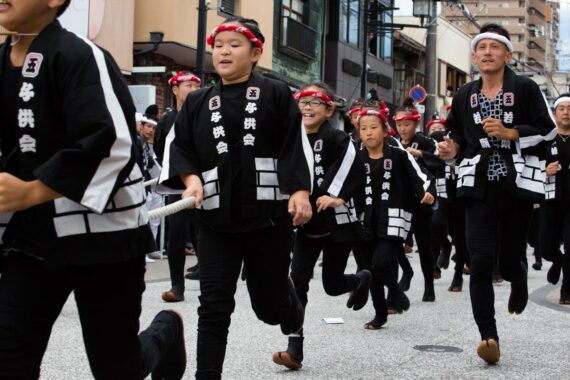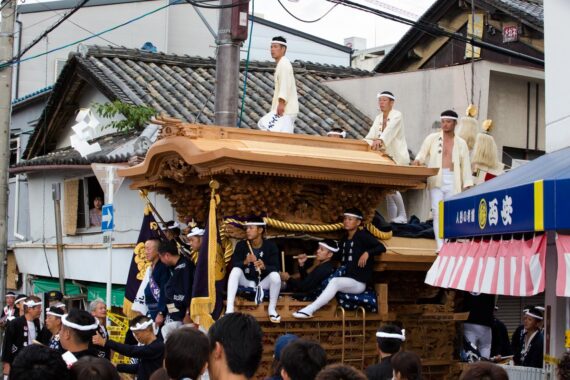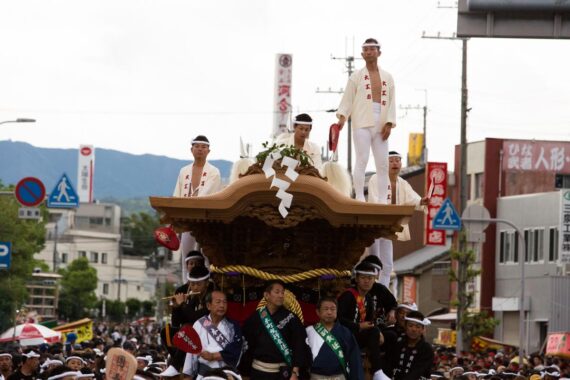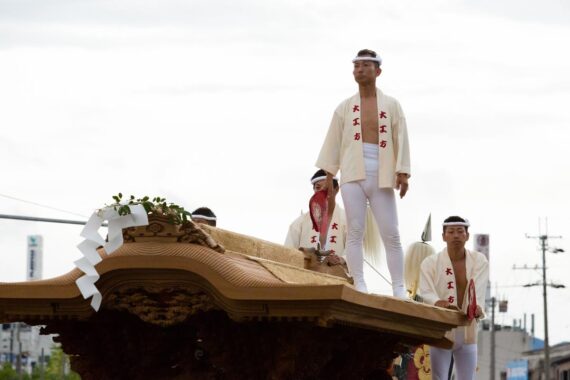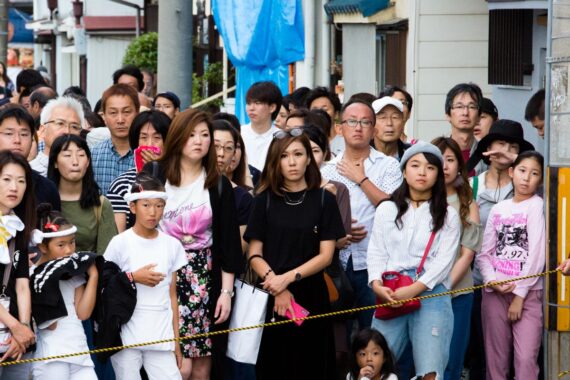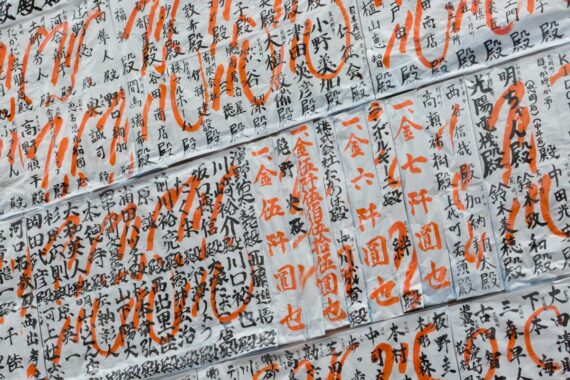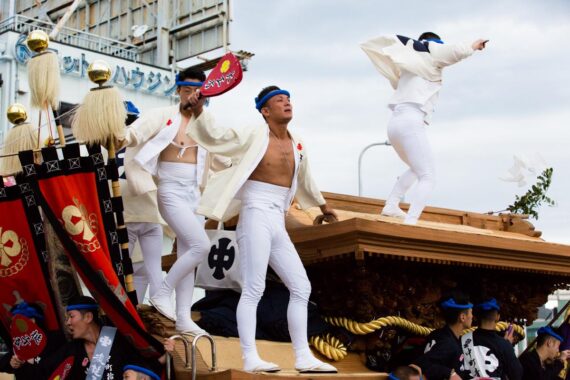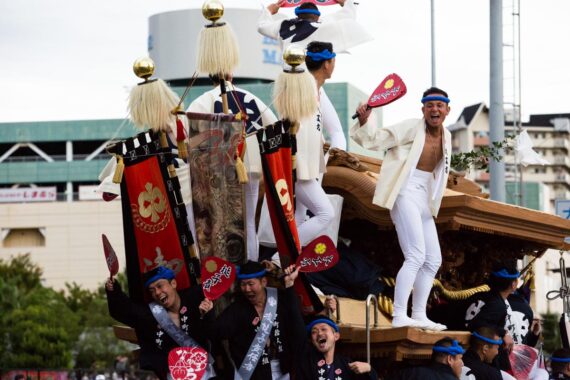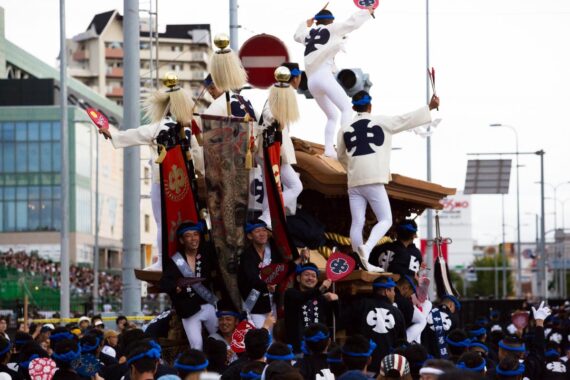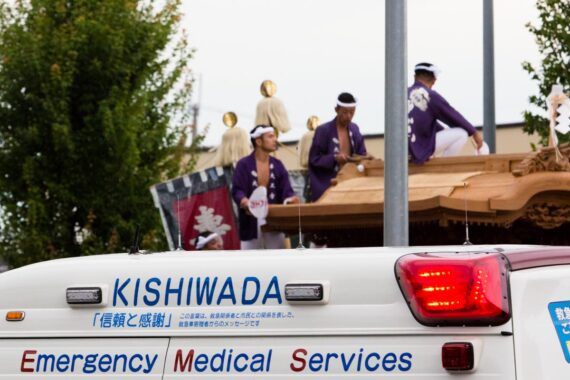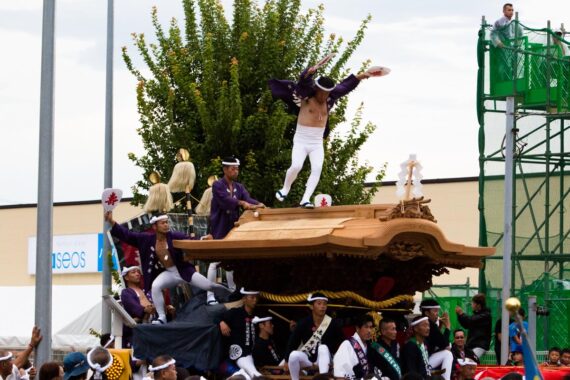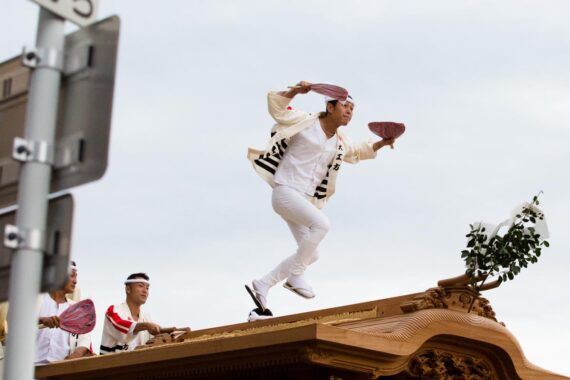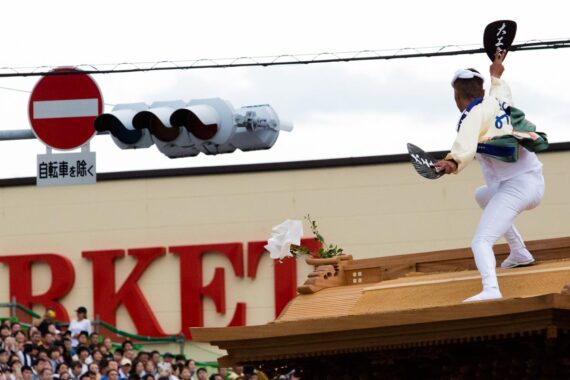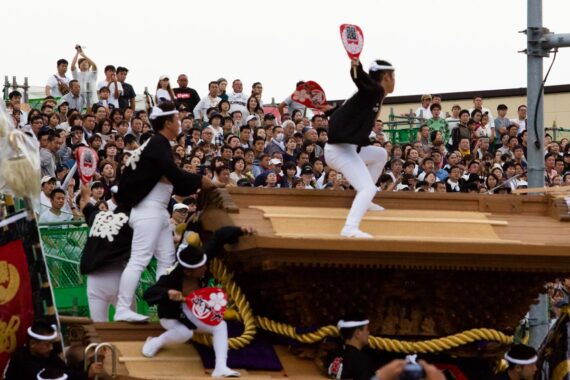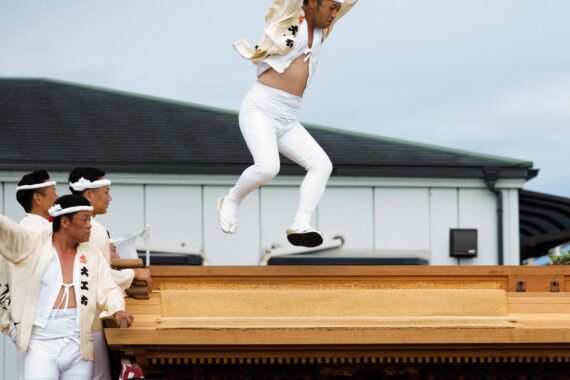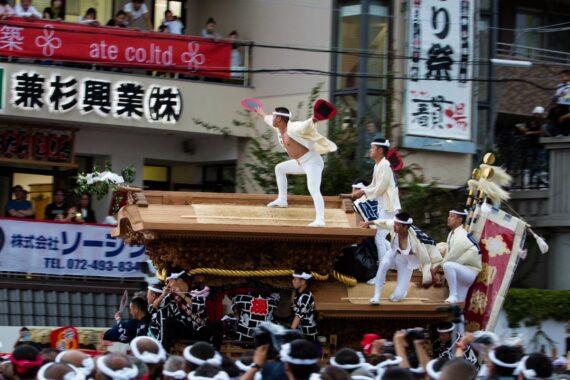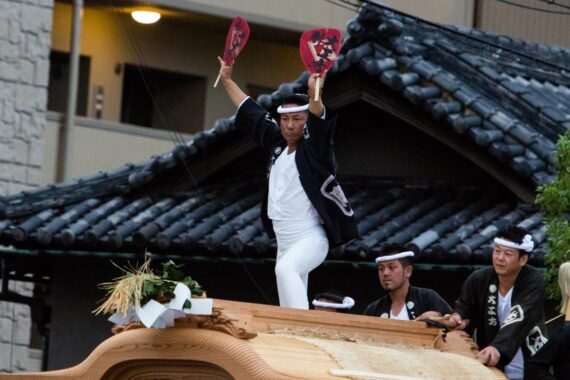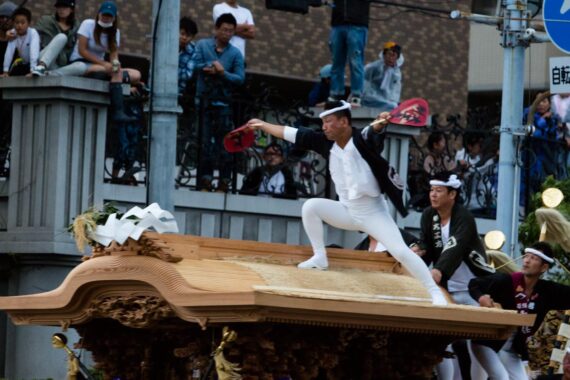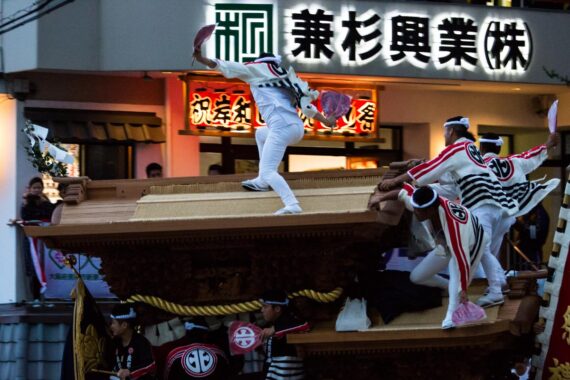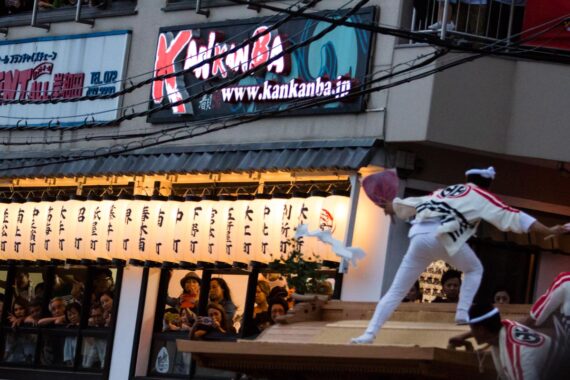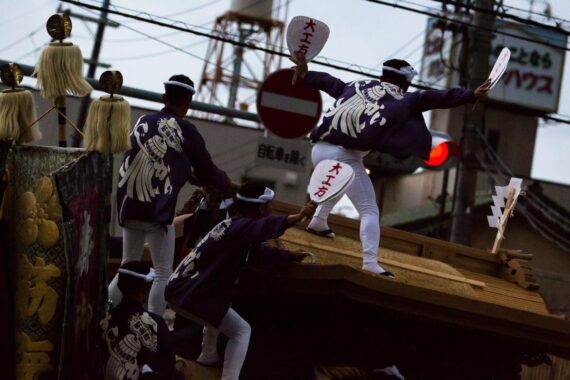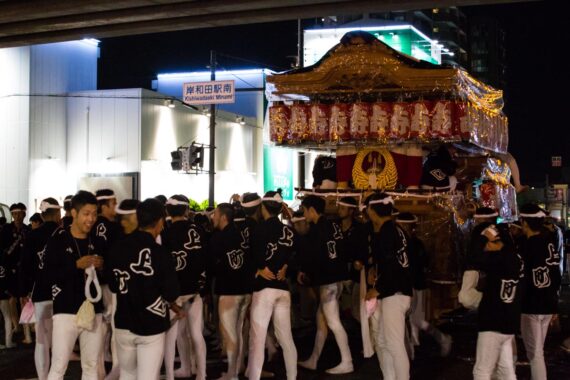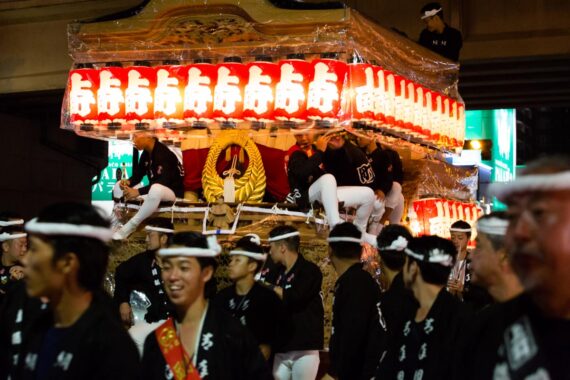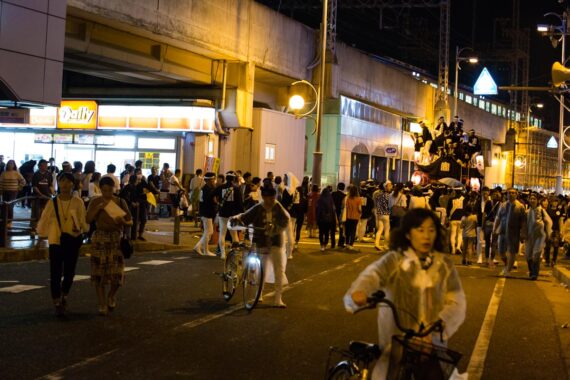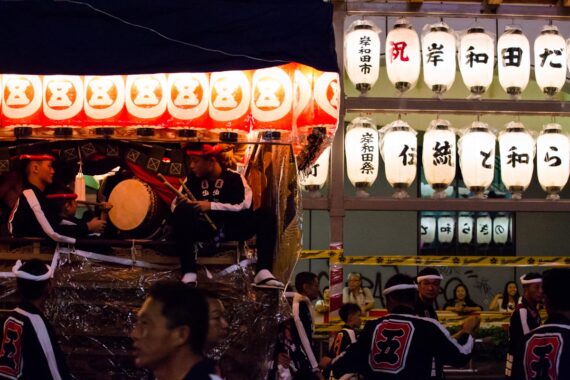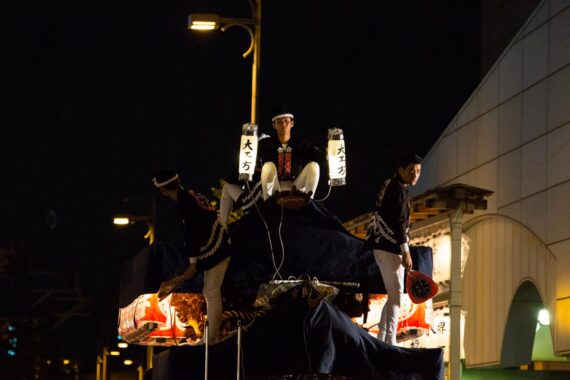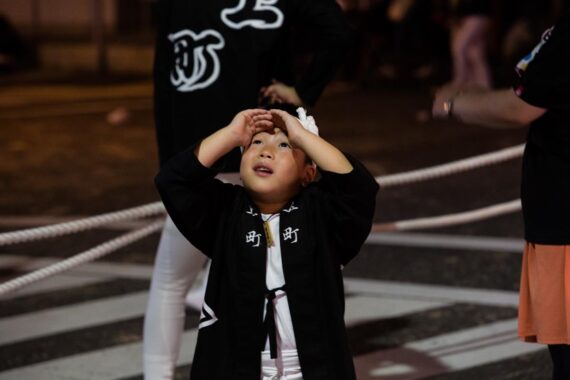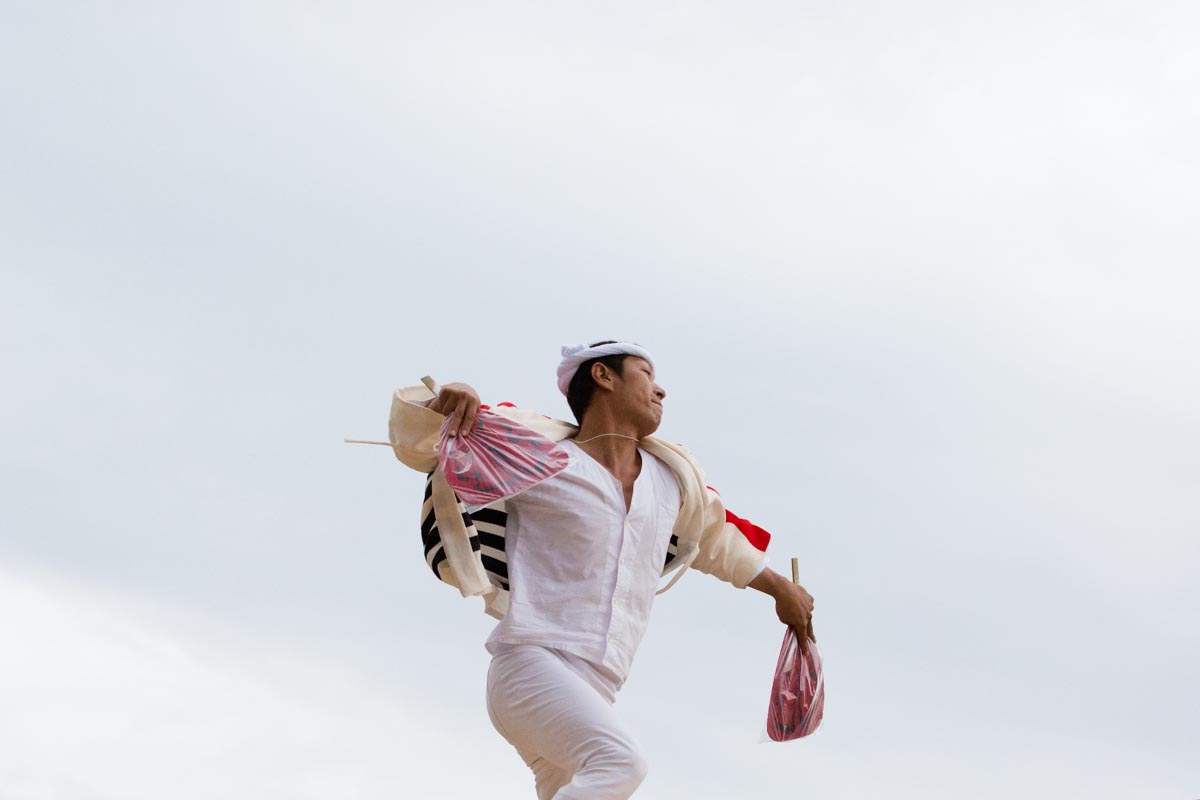
Kishiwada Danjiri Matsuri
Photography by Thaddeus Pope
SHARE THIS
Home >> Documentary >> Matsuri >> Kishiwada Danjiri Matsuri
Each year in mid-September, the historic coastal town of Kishiwada proudly hosts the most widely known, well-attended and deadliest danjiri, or cart-pulling, festival in Japan, known as the Kishiwada Danjiri Matsuri. Located a short distance from the sprawling megacity of Osaka, Kishiwada prides itself as a tough, working-class town, and that toughness is on full display during its beloved danjiri festival.
To the uninitiated, this extreme festival, with its massive carts more reminiscent of parade floats, may not make much sense. However, the combination of music, skill, and orchestrated community effort is deeply imbued with history and meaning.
The festival was conceived in 1703 by Okabe Nagayasu, the daimyo (lord) of Kishiwada Castle who prayed to the Shinto gods at Fushimi Inari Shrine in nearby Kyoto for an abundant harvest. That summons has since become a traditional event that brings people together to represent their respective neighbourhoods. Indeed, over the three centuries since that first religious plea, participation in the Kishiwada Danjiri Matsuri has become a deeply meaningful local ritual: each year thousands of Kishiwada natives, including many who live in other parts of Japan or abroad, return to their hometown to participate in the festival, a powerful gesture that reaffirms their place within the community.
“each year thousands of Kishiwada natives, including many who live in other parts of Japan or abroad, return to their hometown to participate in the festival, a powerful gesture that reaffirms their place within the community.”
Buy me a coffee…
☕ If you enjoyed this post, click here to buy me a coffee.
🏆 If you would like to support the creation of new work, click here to become a patron.

Thaddeus Pope
Documentary Photographer
Based in Japan, Thaddeus Pope is a photographer, videographer and web/print designer with a passion for human-centred visual storytelling. He is available for assignments in Japan and around the world.
If you would like to get in touch, please use the contact form or email info@thadpope.com. Thaddeus can also be found on social media via the following links.




